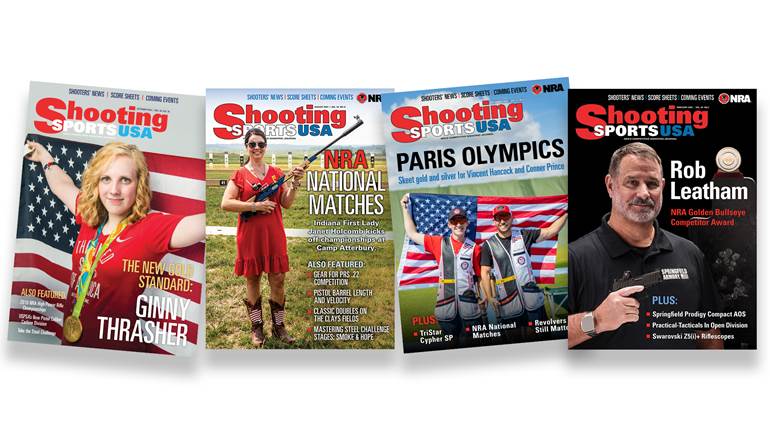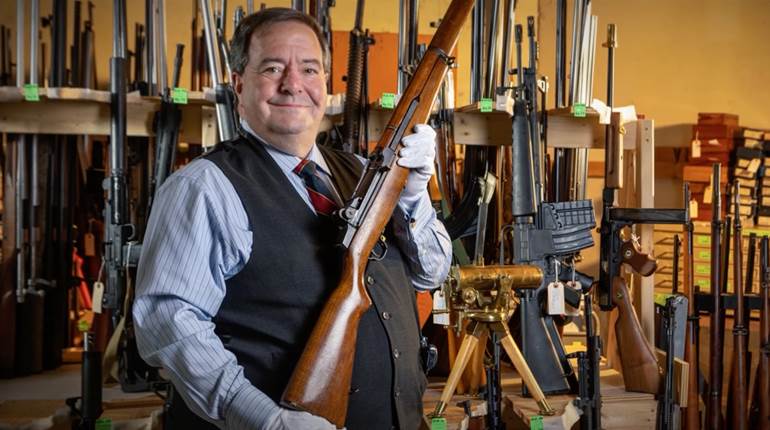Across the centuries, there have been many firearms designed for hunting and many designed for self-defense. But what about a pistol designed to defend yourself from the very thing you're hunting? For tiger hunters in 19th-century India, this was a very real need, and the Howdah pistol was the answer. Watch the "American Rifleman Television" I Have This Old Gun segment above to hear the Howdah's history and see it in action on the range.
"Necessity is the mother of invention. You have a need, someone will find a way of developing something to fulfill it," NRA Museums Director Phil Schreier said. "Certainly, that's been the driving force of the evolution of the technology of firearms throughout history. Most of them having been developed to outgun and overpower one's foe on a battlefield. But one of my favorite niches, and one that is so small, is called the Howdah pistol. Here's a gun just to take tiger hunting from elephants."

The Howdah pistol is named, because howdahs were the large, wicker baskets in which British hunters would ride atop elephants when they were tiger hunting. While the actual hunt would be conducted with big-bore sporting rifles, it was necessary to have a backup handgun with significant stopping power that could be employed against tigers that went after hunters inside the howdah.
"Initially, Howdah pistols were big, like double-barrel percussion guns or flintlock guns. Well, when the cartridge era came in, they were able to modify some of the high-end British double rifles to a pistol version, and basically, that's what Howdahs are," American Rifleman Field Editor Garry James said. "I've got one. The one in my collection has a typical Lang type under-lever. It's the same lever I've got on another actual sporting rifle of my own. The mechanism was the same. As a matter of fact, you look at it, and you can see where all they did was basically whack down the barrels, modify the stock a little bit and bingo."

Howdah pistols were not only designed similarly to the sporting rifles of the age. Very often, these guns would be chambered for some of the big-bore rifle rounds of the era. This particular Howdah pistol is chambered for the .577 Snider cartridge, the standard British service rifle round of the 1860s.
"The thing about the Howdah is, you have to think about the people who are purchasing these. If you're tiger hunting enough that you need a Howdah pistol, odds are you're pretty wealthy," NRA Publications Editorial Director Mark Keefe said. "And one of the finest examples of the Howdah is here in the NRA National Firearms Museum. It's an Alexander Henry, and it's beautiful. It's beautifully cased. It has loading tools with ivory handles. And it has a lot of gold inlay. I mean, this is best, this is a best quality gun. You're not going to be able to buy a nicer gun than this."

Another notable benefit of the Howdah was that these locked-breech actions allowed for the use of tremendously powerful cartridges, and they made use of every ounce of propellant, unlike many of the large-bore revolvers of the era, which most often made use of underpowered cartridges and leaked propellant gases from the cylinder gap. These advantages kept Howdah pistols in use right up until the 20th century.
"Today, they're very highly collectible. They're a lot of fun to shoot. I shoot mine, you know, quite often," James said. "However, I do have loads that I've kind of loaded down for it. Number one, because shooting .577 Snider all day is really tough on your hand. And number two, you know, the gun is a hundred and some odd years old, and so that kind of recoil and that kind of punishment, it's just a little rough on it."
To watch complete segments of past episodes of American Rifleman TV, go to americanrifleman.org/artv. For all-new episodes of ARTV, tune in Wednesday nights to Outdoor Channel 8:30 p.m. and 11:30 p.m. EST.























